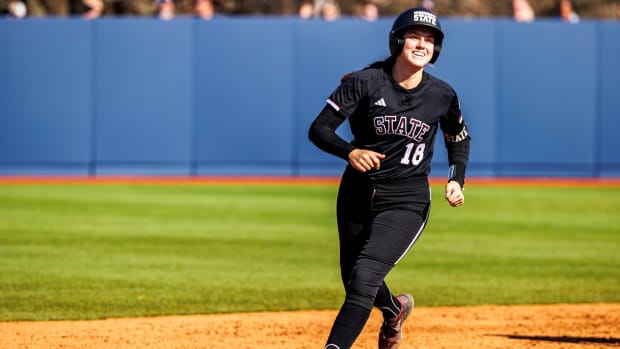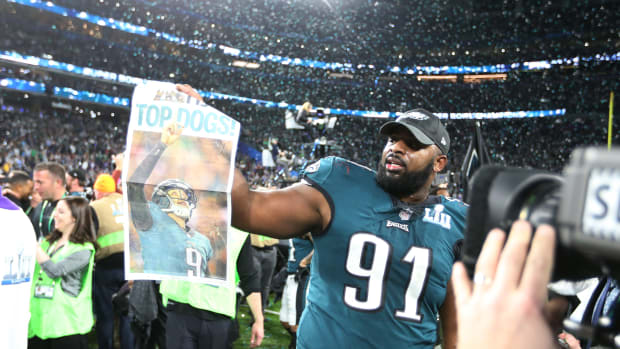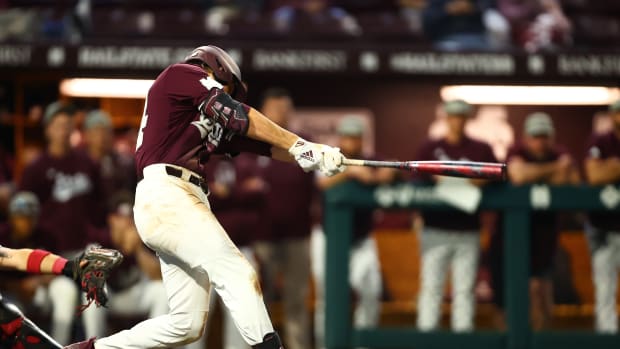Mississippi Governor Reeves addresses crowd sizes at college football games and more
With the originally-scheduled start date for Mississippi State football growing closer, the specifics of a 2020 season still remain very much up in the air for the Bulldogs and essentially all of college football. In the state of Mississippi, fans continue to wonder, should a season indeed happen, how many people will be allowed into stadiums to witness the action in person?
On Monday, Mississippi Governor Tate Reeves, along with State Health Officer Dr. Thomas Dobbs, addressed that issue and more in a media briefing. Here are the comments of Reeves and Dobbs on the questions pertaining to college football and crowd size. The following has been slightly edited for clarity:
QUESTION: Could you share your thoughts and perspectives on the safety of university athletics and activities which could potentially start in September?
GOV. REEVES: Thank you for your question. Let’s be honest. We can’t talk in generalities about college sports or high school sports because every sport is different. There is a huge difference in a cross-country track meet and a high school football game that typically would draw thousands of people to the stands. There is something quite different between a women’s soccer match on the campus of Ole Miss or Mississippi State and a college football game on Saturday that typically would draw 75,000 people. And so what I would tell you that it is highly unlikely that it is going to be allowed – and the universities, I’ve spoken with the universities’ leadership throughout this entire process including multiple meetings in the last 10 days with our university leaders – we’re not going to have college football in which 100 percent capacity is allowed into our stadiums. The university leaders I’ve spoken with are very committed to finding a way to have college football. I think we will have college football. It may be a delayed start, but it’s not going to be 100 percent capacity. The question is, is it 10 percent capacity or 20 percent capacity or 35 percent capacity? But those are the conversations that are being had now. It’s got to be done in a way where, for instance, there are multiple entrances to the stadium that are open and that people have the ability to enter the stadium hours in advance of the game because you certainly wouldn’t want – even if you had let’s say 20 percent capacity on a 70,000-seat stadium – that’d be 14,000 people. You don’t want 14,000 people going into the stadium at the same time. So you’d have to spread it out over several hours for them to enter into the stadium. So is there a way to do it that is more safe than others? Yes. But it’s complicated. It’s going to take a lot of conversations and a lot of discussions. An awful lot of negotiating on what makes the most sense on a university-by-university basis. We are having those conversations. We are not ready to make an announcement at this time. But there is no doubt that Dr. Dobbs and I and the university leaders have had untold number of conversations over the last month or so in respect to this.
DR. DOBBS: At this specific moment in the pandemic, it’s a bad idea to put a lot of people together. We all need to buckle down and beat this thing back, and it’s easy to do. Then maybe it’ll make it a lot easier to make some of these tough decisions going into sports. I watched baseball all weekend. It’s different without fans in the stands, but I can’t imagine – I went to several Major League games last year – and if there were coronavirus in the air when we did that, as crowded as it was and as packed as everybody was together (it would have been a problem). We’ll have to be very thoughtful and methodical about how we approach it (now). Especially because I think what we’ve learned time after time is that people let their guard down. And we’ve got to be careful that if we’re going to do something – we could have come through this very nicely if we had strictly followed the rules and been very thoughtful about wearing our masks and not socializing back in the end of May, but we just didn’t have the composure to have any discipline about it. So there’s a lot of conversation that’s going to go on about it. But if y’all want football, if you want to be able to do the things we normally like to do, don’t do the things that spread COVID. It’s pure and simple. Every time we spread coronavirus around, we make it that much less likely that we’re able to do the other things in life we enjoy.
GOV. REEVES: To be fair, we are having these conversations internally every single day. But it’s not unique to Dr. Dobbs, Tate Reeves and the university presidents and athletic directors in Mississippi. Every single state, they are having these exact same conversations. Different states are in different spots today. But you’re seeing lots of decisions and the decision as to whether or not the student-athletes play, certainly at the collegiate level, is more likely to be made at the university and the conference level. The number of people in the stands, if any, is likely to be made by the leaders in each state. So the bad news is, if college football is kicking off tomorrow, it’s not likely that there would be very many people in the stands. The good news is, college football is not starting tomorrow. And if it’s seven weeks from now, eight weeks from now, we can make a significant difference in what it looks like when they kick off – if and when they kick off – by doing the little things today. By wearing a mask in public, whether you are in Lowndes County, Lee County or Hinds County, you can make a difference in whether or not we have crowds at college football and quite frankly, whether or not we have college football or not.
QUESTION: A lot of people think outdoor stadiums are safer. Can you talk about the threat for fans in the stadiums and when fans come, should the universities require them to wear masks if they come into these stadiums?
DR. DOBBS: We have numerous instances of outbreaks and transmission outdoors. Certainly, it’s kind of like the summer was supposed to make coronavirus go away right? It probably did make it a little bit better believe it or not. As bad as it is, it probably would’ve been worse. Proximity to other people and then loud voices – there are loud voices at a ballgame as I recall – so whenever you have somebody (yelling), that really spreads it a lot. So it’s a little bit of a mitigating factor as far as outdoors. It’s a lot better than being indoors. I’ll give you that. But if we’re going to put (10,000) or 15,000 people in some stands and when they go to the bathroom or when they go to the concession stand or when you’re coming and going and you’re congested at the entrance and exits, those are high-risk endeavors. Those things are going to have to be looked at. So the best thing to do is to have as few people in the crowd with coronavirus as possible. But masks, distancing, very careful engineering of seating and all that sort of stuff would be absolutely required, I think, to even think about doing it safely.
QUESTION: If we realize it’s not fully safe for fans to come into the stands, why would it be fully safe for the players, especially in sports like football and soccer when you are in close contact with sweat and breathing, etc.?
DR. DOBBS: There would be some risk. There’s no doubt. And there’s ways to mitigate that risk, like everything. But I will tell you that in all the outbreaks we’ve seen among football players, they all got it at parties after hours. Or at bars. So I think the bigger thing is when people are getting it and people are getting it when they’re socializing and when they’re hanging out. It is a risk that would need to be mitigated and be something that needs to be managed and I know some of the colleges are going to be (doing) intense testing like they’re doing in some of the professional areas and that does have utilities as far as creating a bubble. But yeah, there has to be precautions taken for those guys too.
GOV. REEVES: I’ll tell you a story I was told – and again, I’ve been kind of busy focused on Mississippi – but as I appreciated, the football team at LSU came back and spent a great deal of time together and they practiced and they lifted and did the things that they did. And then a large number of their players started getting coronavirus and it was, as I appreciated – don’t quote me on this – but as I appreciated it was a large number of players had left the confines of that tight-knit group, gone to downtown Baton Rouge and had a good time and that’s where some of them got it and then of course once they went and got it, it spread throughout the team. Testing is going to be critically important to protect the players obviously.




